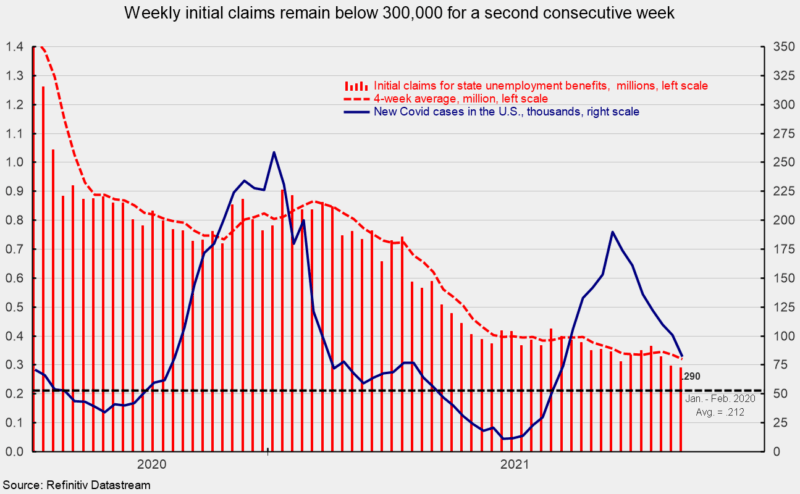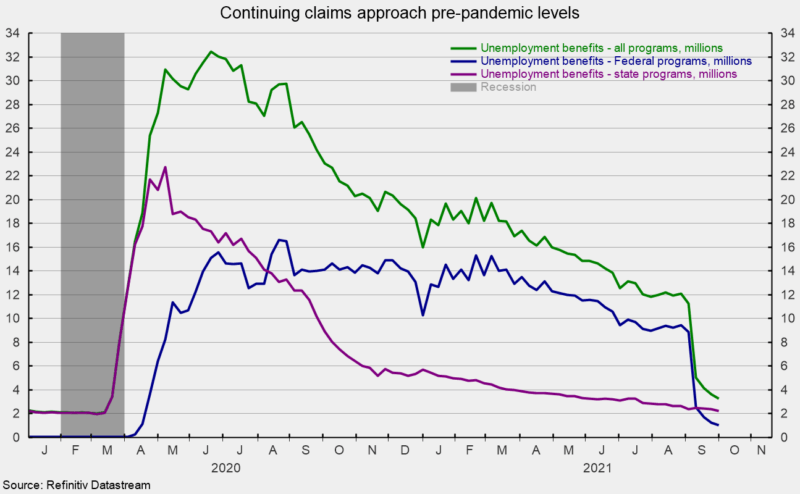Weekly Initial Claims for Unemployment Benefits Hit the Lowest Level of the Recovery
Initial claims for regular state unemployment insurance fell to 290,000 for the week ending October 16, a drop of 6,000 from the previous week’s tally of 296,000 (see first chart). The latest data is the third drop in a row, the ninth decline in the last thirteen weeks, and the second in a row below 300,000. The last time initial claims posted two consecutive weeks below 300,000 was March 2020.
The four-week average fell for a second consecutive week, coming in at 319,750, the lowest level of the recovery. Initial claims for unemployment benefits are approaching their pre-pandemic level of 212,000, the average for January and February 2020.
The number of ongoing claims for state unemployment programs totaled 2.256 million for the week ending October 2, a drop of 141,450 from the prior week. The latest result is the third decline in a row and the tenth in the last twelve weeks. Before the pandemic, state continuing claims were just over 2 million (see second chart).
Continuing claims in all federal programs totaled 1.023 million for the week ending October 2, a drop of 228,542 as the Extended Benefits, Pandemic Unemployment Assistance, and Pandemic Emergency Unemployment Compensation programs all posted significant declines (see second chart).
The latest results for the combined Federal and state programs put the total number of people claiming benefits in all unemployment programs, including all emergency programs, at 3.279 million for the week ended October 2, a fall of 369,92 from the prior week (see second chart).
Initial claims are resuming a downward trend as new Covid cases slow. Overall, the labor market remains tight, and labor shortages, along with materials shortages and logistical issues, are restraining supply across the economy, driving up prices. A sustained period with elevated rates of price increases can have a negative impact on consumer attitudes and consumer spending. Eventually, supply will rise to meet demand but in the interim, risks to the economy remain considerable.







